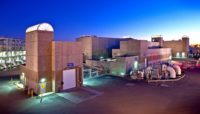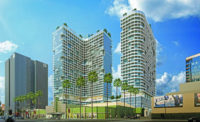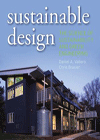While some engineering companies perform work across many sectors of the industry, Carollo Engineers prides itself on its laser-like focus.
“All we do is water,” says B. Narayanan, Carollo’s CEO. “Our clients know that our commitment to them and their water needs is total.”
Founded in Phoenix in 1933, the environmental engineering firm specializes in the planning, design and construction of water and wastewater facilities. Today, with more than 800 employees and 39 U.S. offices, Carollo Engineers has become a leader in water infrastructure engineering and consulting for cities, utilities and special districts of all sizes.
“We have found that our strategic insistence on [water] has aligned our interests with staff and clients, and that creates a strong mutual loyalty,” Narayanan says. “I don’t know if this constitutes a secret recipe for success, but basically this defines the approach we follow and it seems to work for us.”
In California, where a record drought has gripped the state, Carollo currently helps to design or manage more than $9 billion in water and wastewater projects. As a result of the firm’s strong portfolio, industry reputation, focus on sustainability and leadership in water issues, ENR editors have selected the firm as California’s 2016 Design Firm of the Year.
Green Infrastructure
While helping to map out water infrastructure for the future, Carollo also factors potential environmental impacts into each project design.
“Everyone has a different definition of sustainability, so part of what we do is try to draw on existing frameworks and work with clients to make sure we understand what their definition is,” says Lydia Holmes, national manager for Carollo’s sustainable solutions group. “I like to use the triple-bottom-line framework of looking at environment, economics and social [issues]. In all decisions, you need to be thinking about all three of those sectors.”
Martin Adams, senior assistant general manager with the Los Angeles Dept. of Water and Power (LADWP), says cities need to consider many factors when researching a water engineer.
“In this arena, you’re looking at global water resources—not only drinking water, but also stormwater and wastewater—so you need a team with resources,” Adams says. “And Carollo has a great team together and good experience in the area.”
Carollo was recently selected as project manager on the city’s visionary One Water LA 2040 Plan, which LADWP oversees, along with the Los Angeles Bureau of Sanitation (LASAN). The estimated $10-billion to $20-billon, 25-year program will update, integrate and monitor systems for all the water that flows through Los Angeles.
In managing the massive project, Carollo will develop master plans for wastewater and stormwater facilities as well as city policies designed to govern onsite water conservation and reclamation. In addition, Carollo will direct stakeholder outreach and communications programs to engage more than 80 neighborhood councils, 15 council districts and at least a dozen local, state and federal agencies.
To keep water and information flowing through many different city departments and facilities, Carollo developed an innovative computer application called Blue Plan-it. The app allows clients to look at the potential impacts of their decisions related to resource allocation, water treatment, conveyance, storage and infrastructure.
“One of the biggest challenges on this project is that we had to document and explain all the different relationships between water within the city,” says Tom West, Carollo’s project manager. “How water conservation is promoted by one department affects and reduces sewer flows that are managed by another department, which in turn affects how much water can be discharged into the L.A. River, which then affects other parties. So Blue Plan-it is a model that has essentially linked all those different things together, and that has never been done before in the city of Los Angeles.”
Adams says sometimes the biggest hurdle on a job like this is to “create a common view” and know how to bring different people and interests together. “And Carollo demonstrated they could be the lion tamers in the room,” he says.
Water Cleanup
In Northern California, Carollo works for Sacramento Regional County Sanitation District (Regional San) on the $2-billion EchoWater Project. It includes a series of four major design contracts at the Sacramento Regional Wastewater Treatment Plant, which was built in the late 1970s.
The massive upgrade—one the largest public works projects in Sacramento’s history—must be in place no later than 2023 to help Regional San meet strict new state water-quality requirements and maximize water-recycling opportunities in agricultural irrigation, public landscapes and industrial processes. The EchoWater Project will also result in a nearly 95% reduction in ammonia discharged into the Sacramento-San Joaquin River Delta, say Regional San officials.
As part of the contract, Carollo designed the $130-million Flow Equalization project; the $40-million Return Activated Sludge Pumping project; the $50-million Nitrifying Sidestream Treatment project; and the $400-million Tertiary Treatment Facilities (TTF) project. All designs are being delivered as a 3D building information model.
“With four [EchoWater] projects ongoing, there was discussion about the depth of Carollo’s bench and the resources available,” says Vick Kyotani, deputy director of operations for Regional San. “But we found that they put in very good proposals and definitely understood a lot of what Regional San was looking for in terms of services and design.”
Chris Cleveland, Carollo’s project manager for the TTF segment, says keeping the work on schedule hasn’t been easy. “[The projects] all have a schedule order that needs to be implemented, so we’ve used 4D construction scheduling to really understand how a contractor will build and what it will cost over time, and that helps the client visualize how to design the project and how to get it implemented in the time required,” he says.
He says that Carollo builds the projects in 3D computer-aided design to get a visual perspective and adds a construction schedule on top of that. Then the team uses BIM to coordinate the many project disciplines.
“Our schedule on the program is very tight,” says Kyotani. “We sequenced our projects, so early projects had to be done and follow-up projects were dependent on them. Carollo kept on schedule, especially with the analysis and decision process.”
It is this attention to client needs that helped Carollo secure a contract for design of the new 250-million-gallon-per-day Headworks Facility for the San Francisco Public Utilities Commission (SFPUC).
On the $250-million project, Carollo will design a new facility on the same site where SFPUC’s existing headworks is located, which means creating a “very complex construction sequence” because the plant will be operational throughout construction, says Karen Kubick, director of the Wastewater Enterprise Capital Program for SFPUC.
The existing plant takes 80% of San Francisco’s water flow, with varying flow conditions from 30 MGD up to 250 MGD. Kubick says that one differentiator for Carollo was the firm’s ability to design a hydraulic configuration that could accommodate a variety of flows that wide.
“Aside from their professionalism and their expertise in terms of hydraulics, odor control and structural design, they have been actively involved with us,” says Kubick, adding that one of Carollo’s principals attends most of the project’s critical meetings. “Their team is well known in the industry, and I’ve been really impressed with their diligence.”
As Carollo works on its current slate of projects, Narayanan says the company is also looking ahead toward a busy—and wet—future. “The needs in the water market have always been there. But when the recession hit, there was a lack of funding. Now with that turning around, all those pent-up needs are being released, and we are seeing a lot of design and construction work ahead,” he says.












Post a comment to this article
Report Abusive Comment